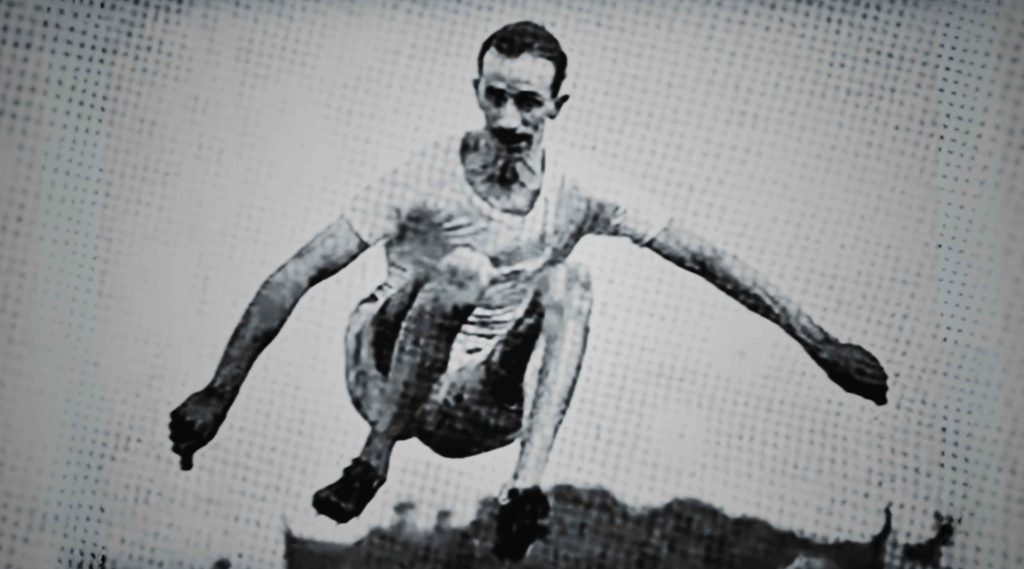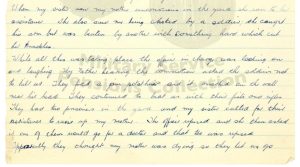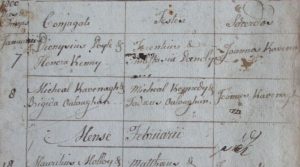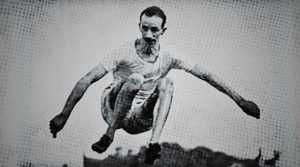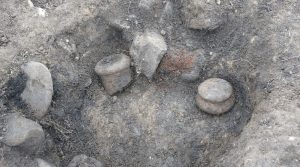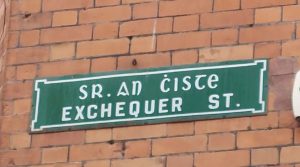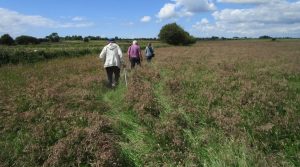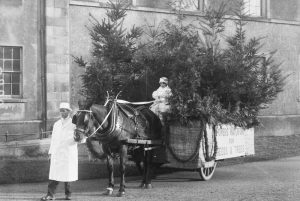Peter O’Connor set world records in the long jump and made history at the 1906 Athens Games, defiantly championing Irish identity before a global audience when, in front of 55,000 spectators, he climbed a flagpole to remove the Union Jack and attached a green flag emblazoned with “Erin go Bragh”.
Peter O’Connor, known as the “Irish Antelope”, was born in Cumberland in 1872 during a brief visit his mother made to England. He spent part of his childhood in Co. Wicklow before settling in Waterford, the place with which he is most closely associated. As a young boy, he began training himself to jump, leaping from his backdoor step over the gravel to the grass beyond.
A D V E R T I S E M E N T
In 1886, only two years after the foundation of the Gaelic Athletic Association (GAA), O’Connor joined the organization. At that time, the GAA was not limited to traditional Irish sports, what we now call “Gaelic games”, but also organized athletics competitions. He began competing seriously in 1894 and won his first all-Ireland championship in 1899.
At a Ballsbridge sports event in 1901, O’Connor set a new world record in the long jump. He soon achieved international fame, with the American media dubbing him the “Irish Antelope”. He held two world records: one for the grass take-off (23 feet 10 inches) and another for the board (24 feet 11¾ inches). The latter became the standard long jump format in later years, and this remained an international record for two decades and an Irish record for 89 years.
Sign up to our newsletter
Between 1901 and 1906, O’Connor was the British long jump champion. In 1905, the Meath Chronicle reported that he had “whacked the Saxons on their own grounds” after achieving the longest jump ever recorded at an English championship.
Before the creation of the Irish Free State, Irish athletes could not represent Ireland in the Olympic Games. However, in 1906, at the age of 34, O’Connor travelled to Athens with Con Leahy and John Daly – supported by the GAA and the Irish Amateur Athletic Association – with that exact goal in mind. Their uniforms featured green blazers and shamrock-embellished caps.
A F F I L I A T E A D

Upon arrival, they soon discovered that Britain’s Olympic Committee had registered them as part of the British team. O’Connor appealed to Prince George of Greece for separate representation of Irish athletes but, without an Irish Olympic Council, he and his teammates were obliged to compete under the British banner.
This was not the only setback O’Connor experienced in Athens. The long jump event also proved controversial. The only judge available was the American team manager, who just happened to coach O’Connor’s greatest rival, Myer Prinstein, the former world-record holder. O’Connor’s protests were ignored and Prinstein won gold, with O’Connor finishing second.
At the medal ceremony, the proud Irishman refused to wear British colours. As the Union flag was raised before 55,000 spectators, O’Connor climbed up the flagpole and attached a green flag bearing the words “Erin go Bragh” (Ireland Forever). This political act served to instil in the international consciousness the notion that Irish identity is distinct from British identity.
Please help support
Irish Heritage News
A small independent start-up in West Cork
Give as little as €2
Thank You
At Athens, O’Connor went on to win the “hop, skip and jump” – later known as the triple jump – becoming the oldest ever gold-medal winner in that event.
Sadly, O’Connor’s Olympic medals are no longer officially recognized as the 1906 competition, retrospectively known as the Intercalated Games, is no longer counted as part of the modern Olympic series. The Intercalated Games were to be a series of International Olympic Games held in Athens halfway between the normal four-year Olympiad cycle, but the 1906 event was the only such games held.
Over his career, O’Connor won around 28 Irish titles and remained deeply involved in sports for the rest of his life, particularly in Waterford, where he became a founding member of Waterford Athletic Club. In 1949, the Irish Press reported that he was credited with inventing the “scissors kick” jump, though O’Connor himself denied this.
>>> YOU MIGHT ALSO LIKE: Waterford jockey Joe Widger’s historic Grand National win at Aintree with Wild Man
By 1904, he had married Margaret Halley of Ballybeg, Co. Waterford and together they had five sons and four daughters. Having qualified as a solicitor in 1912, he became vice-president of the Council of Incorporated Law. He later established a practice in Waterford in 1920 under the name ‘Peter O’Connor and Son Solicitors’, which continues to operate today.
A lifelong teetotaller who preferred the open air to indoor pursuits, O’Connor died at his home in Upton, Newtown, Waterford, on 9 November 1957, aged 85, having been predeceased by his wife.
| “He could run like a deer and jump like the cow that overshot the moon” (Irish Press, 5 May 1949).
A D V E R T I S E M E N T
Note: The 1901 census records O’Connor’s birthplace as Co. Wicklow, while the 1911 census lists it as Cumberland, the discrepancy arising from a temporary visit to England made by his mother just before his birth.
Advertising Disclaimer: This article contains affiliate links. Irish Heritage News is an affiliate of FindMyPast. We may earn commissions from qualifying purchases.
READ NOW
➤ James B. Connolly: first modern Olympic champion and son of Irish emigrants
➤ Golf’s early days in Sligo and its founding fathers
➤ New Geneva: Waterford’s failed town that became a prison for rebels
➤ Charting Judith Chavasse’s life in West Cork and Waterford through her diaries and memoirs
➤ From rackets to rugby: Dubliner Frank Stoker and his sporting triumphs

